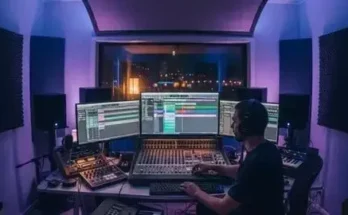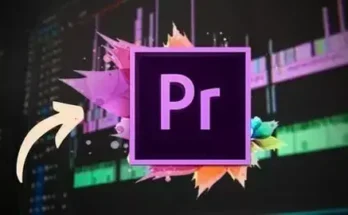P2P | 28 July 2019 | 983 MB
In Robben Ford’s Moody Blues edition of Trading Solos, you’ll trade solos with Robben over five frequently encountered moody blues grooves, in a variety of keys and feels including a down-and-dirty Muddy Water style slow blues in the key of E, a G minor blues, a minor blues in the key of Dm, a 12-bar blues in A minor, and a blues in the key of G with a bit of a folky quality.
“It has been traditional throughout the history of music for musicians to get together to exchange ideas, jam, flesh out things they’re working on, and learn from each other in the process. That’s what we’ll be doing here in Trading Solos, working with 5 different moods of blues.”
For each of the five moody blues jam tracks, Robben will show you a handful of licks and rhythm approaches that you can use over the tracks as you trade solos with Robben. Then, you’ll take turns applying those ideas, trading solos and comping for each other.
Track 1: Mud
“This track is a down-and-dirty Muddy Water style slow blues in the key of E. Here are three different comping approaches for our slow blues in the key of E. Take a look, and next I’ll show you three licks taken from my soloing approach to the track. Before we trade solos, let me highlight a few soloing approaches for our slow blues in E. Check these out, and try to throw them into your playing when we bring it all together. Now it’s time to trade some solos! I’ll start things off, and then it’s your turn to solo. Make sure to back me up while I’m playing lead, and I’ll comp for you when you’re soloing. Let’s get started.”
Track 2: Rumble
“This track is a G minor blues, with the idea being to have a dangerous, “dirge-like” quality to the track. Where we’d often go back to the IV chord from the V, here we’re staying on the V instead. Alright, let’s look at three rhythm approaches we could use for this particular track. Try to get them under your fingers, and then in the next segment we’ll look at three soloing approaches as well for our G minor blues. So now, here are three soloing approaches for our G minor blues. For dramatic effect, I started out my solo high and playing aggressive. This is something to help me break out of my soloing habits, and just go for it. When you’re ready, head over to the next segment where we’ll trade some solos. So now that we have some soloing and comping ideas for this track, let’s trade some solos! I’ll start things out by soloing, and then it’s your turn. I’ll play rhythm while you’re taking a solo, and don’t forget to back me up too! Let’s get started.”
Track 3: Moon Day
“This track is a minor blues in the key of Dm, akin to a song I wrote called ‘Moonchild Blues.’ Let’s take a look at three comping approaches to this track in D minor. This one’s a little unusual, because I’m starting up a little higher. Check these out, and then go on to the next video where I’ll go over three ideas I used in my soloing approach. Before we trade solos, let’s look at three soloing approaches for this track. These are some examples of things you can try out and hear in my solo in the play along. Once you’ve got a good handle on them, move on to the next segment and let’s get soloing! So, now that we have some comping and soloing ideas, let’s go ahead and comp and solo with each other! I’ll take a solo first, and then it’s your turn to solo while I back you up. Don’t forget to play rhythm while I’m soloing! Let’s get started.”
Track 4: Same Thing Again
“This track is a 12-bar blues in A minor. After each run through the 12-bar blues, there’s an 8-bar chorus section. Here’s a couple rhythm possibilities for comping on this track. Check ’em out, and when you’re ready, head to the next video where we’ll go through a few soloing approaches. So, let’s take a look at a couple solo approaches for this track. These are things to try out yourself and look out for when we trade solos in the next segment. Give them a shot, and then let’s get soloing! So there you go: You’ve got some comping and soloing ideas, so let’s go ahead and trade some solos. I’ll start things off by soloing, and then it’s your turn. While you solo, I’ll play rhythm – and don’t forget to do the same for me! Let’s get started.”
Track 5: Bobby’s Blues
“This track is a blues in the key of G, with a bit of a folky quality. Now we’ll look at three rhythm approaches we can use over this track. I’ve actually used this chord progression before in a TrueFire course – there’s something I really like about it; maybe the strumming and open strings. Next, I’ll show you a few licks you can use to solo over the progression taken from my soloing approach. So: here’s three soloing approaches to wrap things up before we get into trading solos. Check ’em out, then head over to the play along where I’ll put them into action. Let’s finish the course off by trading solos over this folksy blues track in G. I’ll start off by soloing, then it’s your turn to take over! Let’s get started.”
Robben will explain and demonstrate all of the key concepts and approaches along the way. You’ll get standard notation and tabs for all of the key examples and performances. Plus, you’ll be able to use TrueFire’s learning tools to sync the tab and notation to the video and can also loop or slow down the videos so that you can work with the lessons at your own pace. All the backing tracks are included to work with on your own as well.
Grab your guitar and let’s trade solos with Robben Ford!
[toggle title=”Home page”]https://tinyurl.com/y5lkzhcs[/toggle]

http://alfalink.to/39ecb700180922723959
Please REPORT in Comment Broken Links




